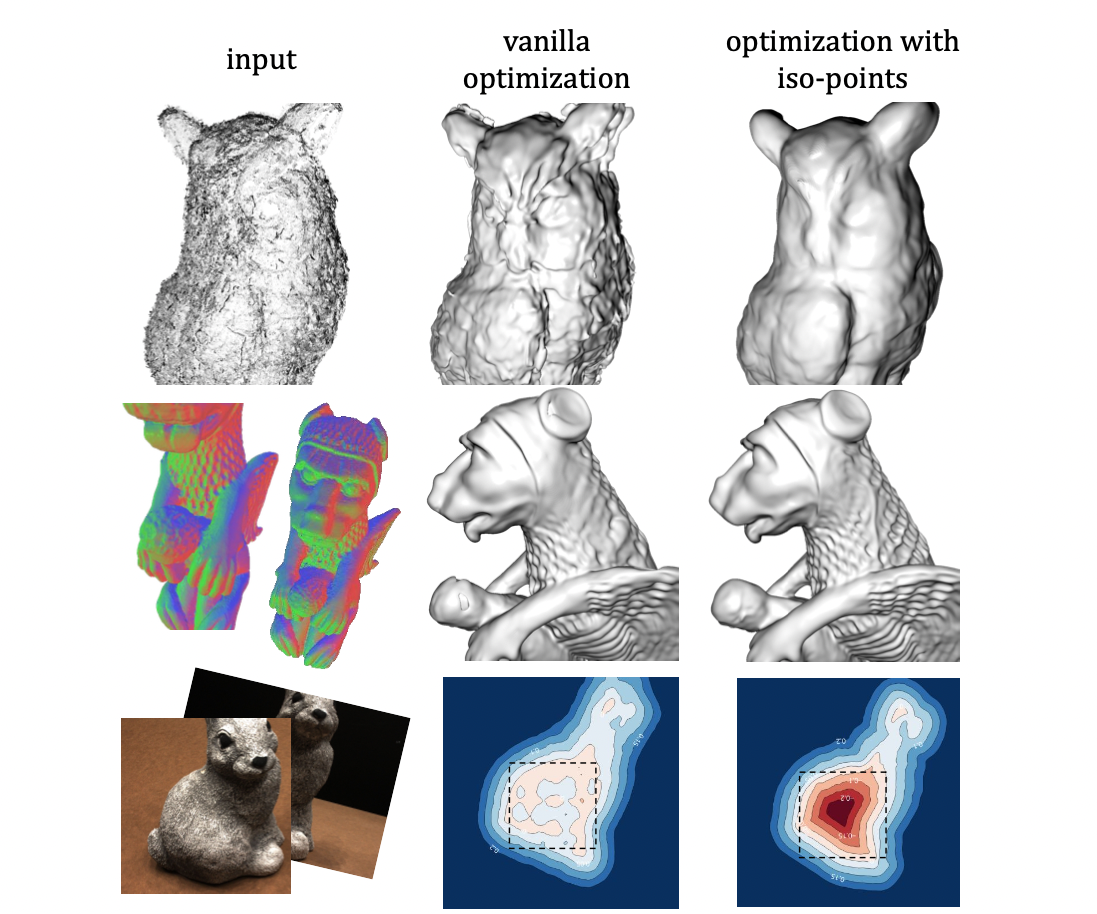ISO-Point Generation
给了当前的SDF \(f_t(p;\theta_t)\),这个隐函数表示的曲面是\(\mathcal{S}_t\),ISO-points 是\(\mathcal{S}_t\) 上的一个稠密均匀分布的点集合,也就是说ISO-Points 是可以比较准确的表示这个曲面的. 也就是说, ISO-Points 是和当前的\(\mathcal{S}_t\) 相关的.
graph TD;
A[Initial Points onto the zero level set]-- Projection -->B[A set of base iso-points];
B--Uniform Resampling-->C[Resampled ISO-Points to avoid clusters of points and fill large holes];
C--Upsampling-->D[Obtained Dense and Uniformly distributed ISO-Points]
Projection
-
Input:
- Initial Points : \(\mathcal{Q}_t\)
- Current SDF \(f_t(x;\theta_t)\)
-
Output:
- Base ISO-Points : \(\hat{q}_t\)
-
Method:
- Newton's Method
For k=1:K:
- $\mathbf{q}^{k+1}_t=\mathbf{q}^k_t-\tau\left(\frac{J_f^{\top}\left(\mathbf{q}^k_t\right)}{\left|J_f\left(\mathbf{q}^k_t\right)\right|^2} f\left(\mathbf{q}^k_t\right)\right)$
- $\tau(\mathbf{v})=\frac{\mathbf{v}}{|\mathbf{v}|} \min \left(|\mathbf{v}|, \tau_0\right)$
At Each training iteration, \(K<=10\), when $|f(\mathbf{q}_t^k)|<\epsilon$, stop.(\(\epsilon=10^{-4}\downarrow 10^{-5}\) during training )


